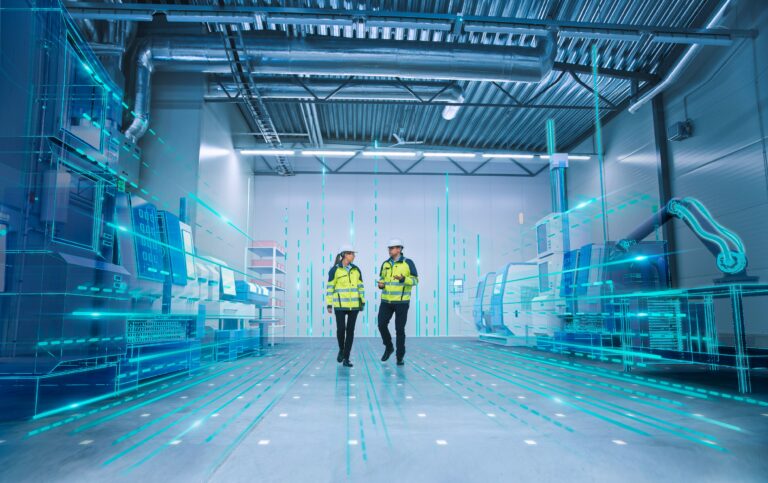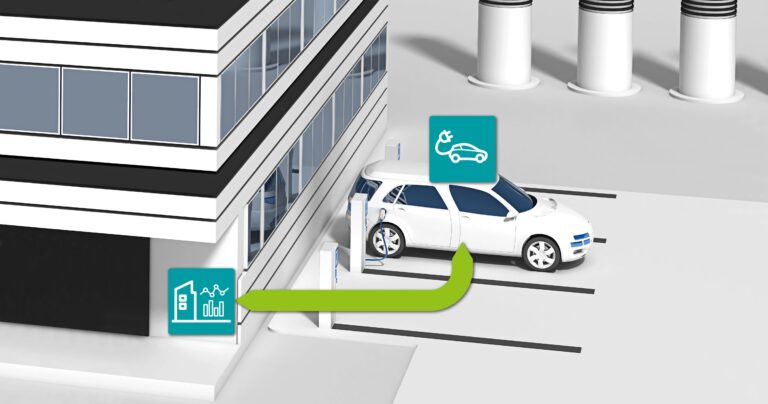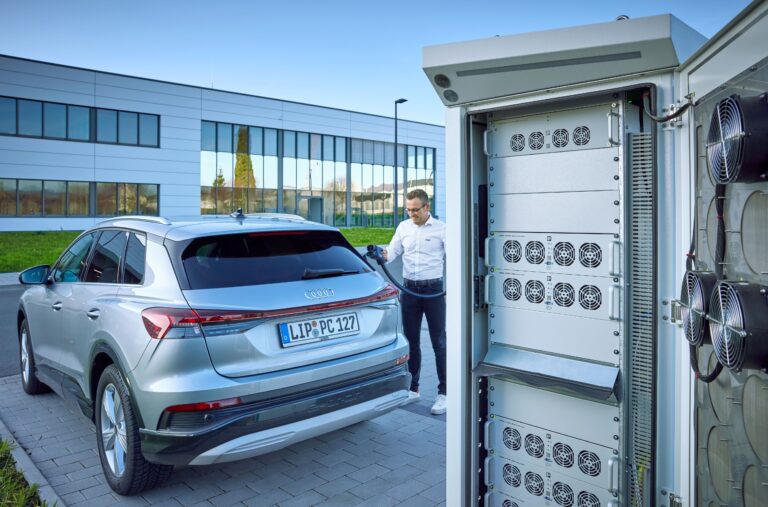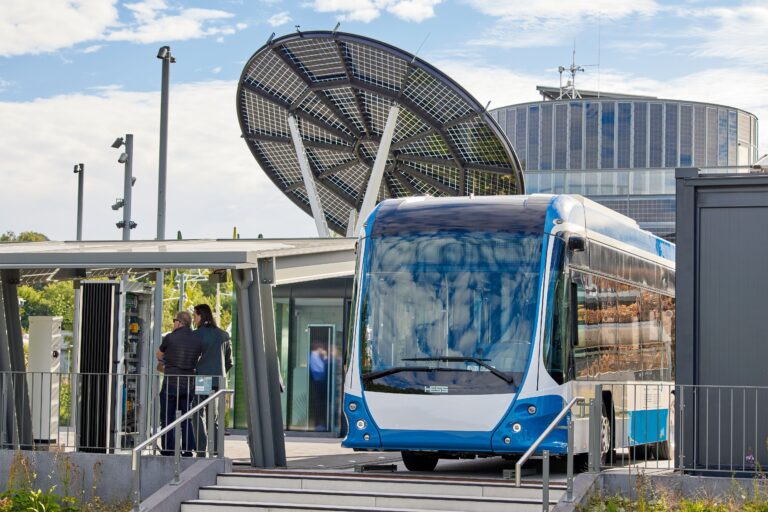- Kirsten Zirkel
- Published on:
- Category: Charging infrastructure
- 5 min.
Direct current instead of alternating current: Advantages for industry
Buildings and factories are usually constructed with AC power grids. However, in light of rising energy costs, DC grids are becoming increasingly important in commercial buildings as a sustainable and efficient alternative. But what exactly are the advantages?
One of the main advantages is energy efficiency. Many loads in production require DC voltage for their operation. To provide this from an AC grid, rectifiers are used to produce DC voltage from AC voltage. Establishing a higher-level DC grid eliminates the need to equip each individual load with its own rectifier. This saves costs and, above all, energy, because the power dissipation that occurs when converting AC voltage into DC voltage is largely eliminated.
Another major advantage is that fewer resources are required, since fewer copper cables are needed to set up a DC grid. Instead of five conductors, only three are required to set up the grid. Furthermore, these usually have smaller cross-sections, since a DC grid is typically set up with 650 volts. This means that lower currents can flow than in a 400 V AC grid, where the cable would generate too much heat due to higher currents with the same conductor cross-section.

In addition, feeding renewable energy into a DC grid is easier and more efficient, which promotes sector coupling and thus the realization of an All Electric Society. The direct current generated by the photovoltaic system on the roof of the industrial building or from wind power can be fed into the DC grid directly or by simply converting the voltage level, thus improving the company’s carbon footprint.
The overall efficiency is further increased by energy recovery. In the case of recuperation, for example, when motors brake, the mechanical energy can be converted back into electrical energy and fed back into the DC grid. By comparison, in the case of AC grids, this energy is usually converted into heat and can therefore no longer be used for other loads.

Integration of fast charging stations – logical and future-oriented
Integrating DC fast charging stations into an existing DC grid – at first glance, this makes perfect sense. By supplying the DC charging stations directly from the DC grid of the industrial building, the advantages described can be applied to the charging stations: reduced conversion losses, increased energy efficiency, and saving resources in cabling.
However, bidirectional charging is another topic that is becoming increasingly relevant. In this case, electricity flows not only from the charging station to the electric vehicle, but also from the vehicle battery back to the respective household, into the supply network, or – as in this application – back into the DC grid of the industrial building. The battery of the electric vehicle can be used as a storage unit and can help supply the building when necessary. Direct integration of the charging station into the DC grid eliminates the need to convert the alternating current into direct current and back again. In addition, the vehicle battery can be used as an additional energy storage unit to supply the production building and, for example, buffer peak consumption. The battery recharges when the building’s energy requirements are low. This is controlled by intelligent energy management systems, which can switch the electric vehicles on and off as required.
Loading meets charging: A golden opportunity

Integrating fast charging stations also makes sense on closer examination: mobility is changing. Last year, we saw a change in the transport sector in particular – and especially in goods transport by road. More and more utility vehicles are being electrified. Driven by climate policy requirements, but also from a cost perspective, the industry is pushing for the switch to battery electric drives. Due to their large battery packs, electric trucks are usually charged with DC. When setting up a commercial DC grid, it makes sense to factor in charging options for your own vehicle fleet, including your own goods transport. This is because these electric vehicles are charged on the company’s own premises. If the electric truck’s range is less than the distance it covers in a day, additional charging options are needed. Due to tightly synchronized supply chains, opportunity charging, i.e., charging during short stops, also comes into play here. The electric trucks can be charged at the ramp while production equipment or finished products are being loaded and unloaded. If the installed fast charging stations have the appropriate charging power, the electric truck can continue its journey without an additional charging stop. This means that idle time is effectively used as charging time.
This is how it can be done: Building 60 in Blomberg
Building 60 at the Phoenix Contact site in Blomberg shows what the future of power supply could look like. As a manufacturer of components and solutions for electrification, networking, and automation, it was only logical to build a production building with a DC grid. This is supplied by the public AC grid, which is rectified in a central unit – built with the power electronics CHARX power from Phoenix Contact – into a 650 V DC grid.
In addition, the building generates its own energy via a photovoltaic rooftop system with 110 kW of peak power and a battery storage system with 240 kWh capacity. The bidirectionally connected electric vehicles are simultaneously both energy consumers and energy producers here. With the higher-level PLCnext control in conjunction with the energy management system, peak loads are buffered by integrating the vehicle batteries. A successful example of the integration of fast charging stations in commercial buildings – it makes sense, doesn’t it?

You might also be interested in

- ·
- Charging infrastructure
Charging Interface Initiative (CharIN) e. V. How can CharIN e. V. dominate the global e-mobility market? CharIN e. V. –[...]

- ·
- Charging infrastructure
Successful HPC charging test in the All Electric Society Park Electric bus put to the test for High Power Charging.[...]
Your personal contact person
For all queries regarding our products and solutions. I would be happy to advise you on your e-mobility project. Let’s shape the mobility transition together!

